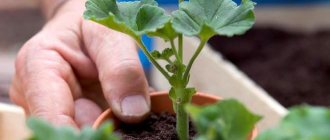After transplantation, the orchid will delight its owners with lush flowering only if all the rules for caring for the plant are followed.
Timely watering, good lighting, humidity and temperature are important components of proper care. Otherwise, the orchids will wither.
Caring for an orchid is not an easy task.
After transplanting the plant, the following rules should be followed:
- We must not forget about timely trimming of the peduncle after flowering . Scissors must be clean and sharp;
- for subsequent lush flowering, the plant should be placed in a lighted room with a temperature of 20 to 30 degrees ;
- air humidity must be at least 50%;
- The newly transplanted plant should be watered during the day, when the flower is exposed to sunlight;
- It is necessary to water the flower immediately after transplanting . The fresh substrate must absorb a sufficient amount of moisture. To do this, immediately after transplanting, place the flower in a container with warm water for half an hour. The next watering is two weeks later, so that the soil has time to absorb all the necessary moisture;
After transplanting, the orchid needs to be watered well.
- It is recommended to feed the plant 20 days after transplantation.
What happens to the plant?
Transplanting a flower into another pot is stressful for the plant . Due to this, it may become sick, lose leaves and even stop growing. The gardener's task is to help the plant during the period of adaptation to a new place.
Important! An orchid is a very capricious plant, so during the adaptation period it is necessary to pay much more attention to it.
After replanting, you should carefully monitor the condition of the flower: take care of the leaves and the new soil. You should not overdo it with “care”: at this time, the orchid requires rest and moderate watering.
Why do you need to replant orchids?
When we bring a beautiful, blooming, and sometimes fragrant plant home, we often wonder how long it will please us. Of course, orchids, like all other plants, have their own, unique cycle.
The flowering period of Phalaenopsis lasts from 3 to 8 months, followed by a period of rest, growth of leaves, roots, or reproduction. This hybrid lives from 5 to 15 years, and the life cycle can continue in actively growing children.
It is important to know that despite their external fragility, phalaenopsis are very tenacious: with the last of their strength they can produce flower stalks and raise children at the cost of their own lives. Flowering and reproduction continue their cycle, and, therefore, the owner of such a plant needs to know when it is best to replant an orchid, how to do it and what is needed for this.
It will be appropriate to replant phalaenopsis immediately after purchase and at least 3-4 times throughout the life of the plant. Quite often, experienced flower growers are faced with the process of transplanting a division or baby that has grown on a peduncle or neck of a plant.
Read on to find out whether it is possible to replant an orchid immediately after purchase during the flowering period.
Basic care steps
During the period of “acclimation” of the plant to a new place, the gardener needs to follow a few simple steps :
- Place the orchid in the shade, away from direct sunlight, for 8-10 days. The temperature in the room where the home beauty is located should not exceed 20 degrees Celsius.
- If the plant experiences the “move” favorably, then you can water it immediately. But, it is best to wait 4-5 days and only then saturate the soil with moisture. Repeated watering can be done no earlier than after 2 weeks.
- For additional feeding, you should prepare a nutrient mixture: add several useful microelements (for example, potassium and nitrogen) to boiled water. Then dip the flower pot into the mixture and keep it in it for half an hour. For best effect, it is recommended to spray the leaves with this liquid. Repeat the procedure no earlier than 20 days later.
Substrate mixture for planting
With the exception of Ascocenda and Vanda hybrids, which are kept with an open root system, most orchids at home are grown in a special substrate of pine bark and expanded clay, the fraction of which depends on the plant variety.
Sphagnum moss is also often added to this mixture - it retains moisture well and helps to better strengthen the roots of the plant in the pot.
Don’t be tempted by the availability of “ready-made” soils for orchids on sale - it is preferable to prepare the mixture yourself to take into account the requirements of your particular plant. In addition, it is not difficult, and all components individually are quite accessible.
Step-by-step instructions: how to care at home?
Action steps
- Provide the plant with comfortable conditions.
- Monitor the condition of the soil: water and fertilize the flower in time.
- Properly care for leaves and roots.
Content
The health of an orchid directly depends on the conditions of its maintenance . For maximum growth and active flowering, several rules must be followed:
- The flower should not be left in direct sunlight. The light must be diffused.
- In spring and summer, during times of strong solar activity, it is best to stick a matte film on the window, which will protect the plant from burns.
- Lack of light negatively affects the health of the orchid, therefore, if there is a lack of natural light, you should resort to artificial lighting.
Watering
The orchid requires moderate watering : it does not tolerate stagnation of moisture in the roots. During flowering, the plant requires more intense moisture.
The frequency and amount of watering directly depends on the time of year:
- In winter , the plant does not require moisture, so it needs to be watered extremely rarely and very carefully.
- In summer, the orchid requires watering 2-3 times a week. This needs to be done correctly: fill a basin with boiled or settled water, put a flower pot in it and hold it in it for 15-20 minutes. Afterwards, let the moisture drain and return it to its place.
Top dressing
The plant should be fertilized when it is in the growth phase, no more than once every 20 days.
Attention! For orchids, only fertilizer that is intended for this species is suitable. Read the instructions carefully so as not to ruin the flower!
The plant's soil also requires care : it should be washed once a week to prevent an excess of mineral salts. If the gardener has the opportunity to change the soil annually, then fertilizers can be completely abandoned.
Which pot is suitable for transplanting?
If you plan to grow phalaenopsis, choose only a transparent pot. Light, which horses need for photosynthesis, will freely pass through its walls. The “clear container” rule only applies to phalaenopsis. Other varieties of orchids can be grown in opaque, plastic, clay or ceramic pots. But then caring for them will be more difficult. The safest option is to choose a transparent pot for all types of orchids. Don't forget that the container must have drainage holes.
What to do if the plant is lethargic, yellow, under what conditions will it bloom?
Withers
There are several reasons why a plant may wither after it has been transplanted:
- violation of the integrity of the root system during transplantation;
- rotting or drying out of roots due to improper watering;
- lack of air for roots;
- direct sunlight on the leaves of the flower;
- use of unsuitable fertilizer or its excess;
- the appearance of pests.
How to save a plant from death:
- If the integrity of the root system is damaged, you should remove the flower pot to a cool, dark place for a couple of hours, and then place it in a bowl of warm boiled water for exactly one hour. After the procedures, put the plant back in place.
- Drying of the roots is eliminated by moderate watering of the orchid.
- To solve the problem associated with lack of air, you should create additional holes in the walls of the pot using a hot knitting needle.
- If the orchid is exposed to direct sunlight, you should immediately move the pot to a “safe” place.
- Unfortunately, the process of root rotting can only be eliminated by replanting. Before moving the flower to a new pot, you need to carefully examine the roots and cut off those that have rotted (they are black or brown). The cut must be disinfected with cinnamon or crushed activated carbon.
- A special product that is sold in any flower shop will help in the fight against pests.
The leaves are turning yellow
There may be several reasons why leaves turn yellow.:
- exposure to direct sunlight;
- unsuitable room temperature (too low for the orchid);
- drafts;
- insufficient or excessive watering of the plant.
- Bring the temperature to the optimal state for the flower, or move it to another, more comfortable place.
- To protect the plant from direct sun exposure, a frosted sticker on the glass or moving it to a shady window sill will help.
- The root system will help regulate the watering regime: the roots of a healthy plant, in a humid environment, have a bright green color, and in a dry environment they are silver-green. There must be holes at the bottom of the pot to drain excess moisture.
Doesn't bloom
If the orchid has stopped blooming, pay attention to its care: perhaps you are doing something wrong. Possible reasons :
- unsuitable temperature conditions;
- excess or lack of room lighting;
- excessive watering.
How to solve this issue? What to do :
- Stimulate flowering with special chemicals.
- Sometimes, to start the flowering process, the orchid needs to be “stressed”: take the pot into a cold room (at least +15) for the night, and then bring it into a warm room. You can also try to create a drought: water the plant for 3-4 days. And then stop watering for 2 weeks. The result will not take long to arrive.
- The flower loves a lot of diffused light. The lighting should be adjusted to the desired parameters.
Although the orchid is a very capricious flower, there is no need to be afraid to replant it! With proper care and compliance with all the rules described above, it will easily take root in a new pot and sparkle with bright colors.
Frequency and timing
If a flower is purchased from a specialized store, then in most cases it does not need to be replanted immediately. Such plants are sold in a properly selected pot with a suitable substrate composition. In this case, it is necessary to evaluate its condition and, if necessary, replace the “habitat”.
Related article:
How to care for orchids so that they bloom all year round?
In the future, transplantation should be performed every 2–3 years. More specific deadlines are determined taking into account the above characteristics. At the same time, one should not allow a strong deterioration in the appearance of the plant, otherwise it will not survive the procedure. Therefore, the bush should be replanted when the first undesirable symptoms appear.
Another signal for replanting is the appearance of a large number of aerial roots. This causes a lack of nutrients, which in turn leads to the leaves turning pale and yellowish spots appearing on them, as well as the cessation of flowering. If new buds do not form within 3 months, then the bush clearly needs to be replanted.
It is recommended to perform this procedure in spring or autumn immediately after flowering ends. If a plant needs emergency help, it can be done at any time.
It is not advisable to replant a blooming orchid, but under certain circumstances it is possible. Experienced flower growers even specifically perform replanting at the first signs that flowering is nearing completion in order to extend this period. In this case, the peduncles are shortened by 2 cm to activate root growth. If the transplanted bush takes root well, its side shoots quickly grow and new buds form on them.
Important! When to replant an orchid
Medicinal properties
This plant has been well known in the East since ancient times. Residents of Japan and China used it to make medicines that helped with a dozen diseases, ranging from back pain to infertility. The fact is that the drugs obtained from the orchid had strong antiseptic and analgesic properties.
They were also used as a means to prolong life. Modern scientists, studying this plant, have identified an interesting property. The orchid root contains a substance that can accelerate the release of a cytokine gene in the human body, which is responsible for longevity.
Flower rejuvenation
Old plants can be successfully rejuvenated. If the trunk has become elongated because the leaves below have been naturally dying off for a long time, you can carry out a procedure for rejuvenating the phalaenopsis:
Cut off the top so that underneath there are air layers and the beginnings of new roots. Treat the area with activated carbon.
Prepare the substrate or bark.
Place large pieces of bark on the bottom of the pot.
Place a piece of foam plastic under the cut area - this technique prevents moisture from entering the cut area and rotting.
Place the orchid and sprinkle the sides with fine bark for stability. The bark should cover the place where the root buds are located so that they begin to grow faster.
The rest of the plant with roots can also be cleaned and left in the substrate. Soon a new rosette of leaves will grow from it.
Do I need to immediately water a plant transplanted into another pot and can I use root?
Immediately after transplantation, it is necessary that the new substrate is completely saturated with moisture.
It is important to remember that watering orchids is significantly different from other indoor flowers. The best option would be to place the pot with the transplanted plant in a container of warm water for 20-30 minutes (what other methods of watering are there?)
The water should not be hard, and to achieve optimal results, you can add a little soluble fertilizer (potassium, nitrogen, magnesium).
You can also use root. This remedy is used in two different ways:
- for powdering roots in places of damage and cuts;
- for watering after transplantation (1 gram of root per liter of water).
In both cases, this is necessary to stimulate increased growth of the root system, which contributes to a successful rooting process.
After watering is completed, excess moisture must be allowed to completely drain through the drainage holes. Otherwise, the roots may begin to rot and become moldy.
Reasons for lack of flowering
After each flowering phase, the orchid enters a state of dormancy, which lasts 2-3 months. After this, the phalaenopsis should bloom again. But it happens that after resting for 3 months, the flower begins to awaken and grow without entering the flowering phase.
We recommend viewing: Barberry shrub - planting and care in open ground, types and varieties with photos
An orchid may refuse to bloom for the following reasons:
- The level of lighting leaves much to be desired. Once optimal lighting is provided, the plant will soon bloom.
- When fertilizing, an excessive amount of nitrogen fertilizer was applied. To correct the situation, you need to wait until the flower consumes excess nitrogen and fertilize with phosphorus fertilizers.
- After abundant flowering, the plant is exhausted and does not have enough strength to form new buds. In this case, you need to give the flower time to recover, and then perform the procedure for stimulating flowering.
Important!
Stimulation of flowering involves lowering the night temperature so that its difference from the daytime temperature is about 7 degrees. In addition, the irrigation rate is reduced and stimulating substances – “Bud” or “Ovary” – are added to the irrigation water.











